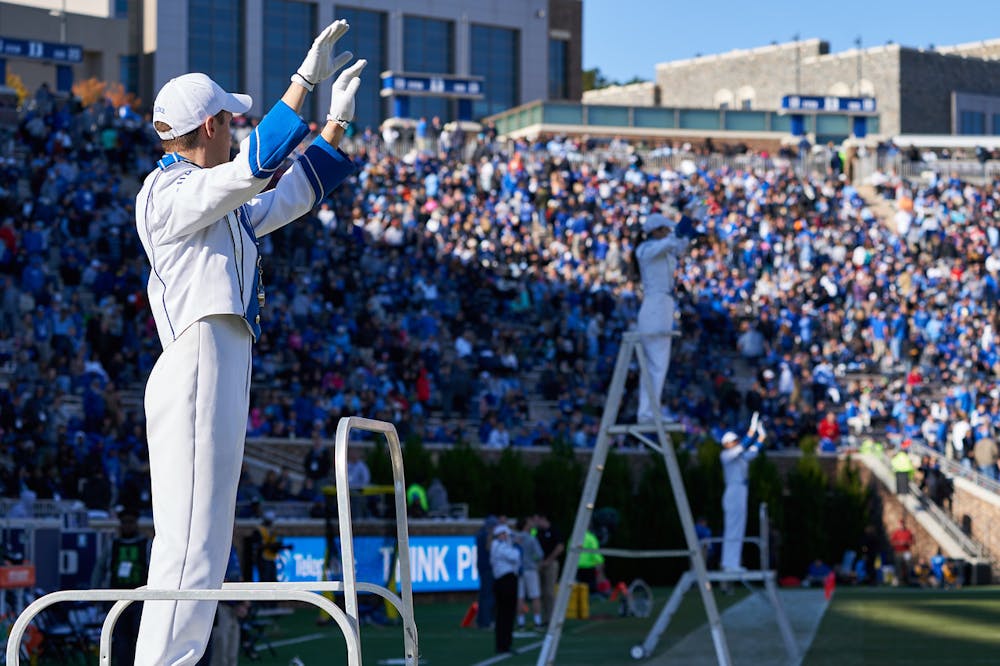When Duke sports fans enter Wallace Wade and Cameron Indoor Stadium, they are greeted not only by the cheers of thousands of spectators, but also by the sound of “Fight, Fight,” played by students in blue and white uniforms.
One of Duke’s oldest student organizations, students in the Duke Athletics Band have performed music to charge up Duke fans since the early 1900s.
Today, the Duke Athletics Band is home to 93 student musicians. Members start the fall semester in Duke Marching Band, which plays at football games, and transition into Pep Band, which plays in the stands at basketball games.
The band has an extensive leadership team consisting of a band director, assistant band director, student leadership team and section leaders. Jeff Au, band director for Duke Athletics, works with Assistant Band Director Leigh-Ann Lethco to arrange music, organize logistics for football game days and manage the band’s budget and student recruitment efforts.
Senior Rachel Washart, a piccoloist and president of the band, describes it as a “student-forward” organization. While Duke Athletics provides the band with the resources and support they need, she notes that students can push for the direction they want to take the band in to create “the best band experience for themselves.”
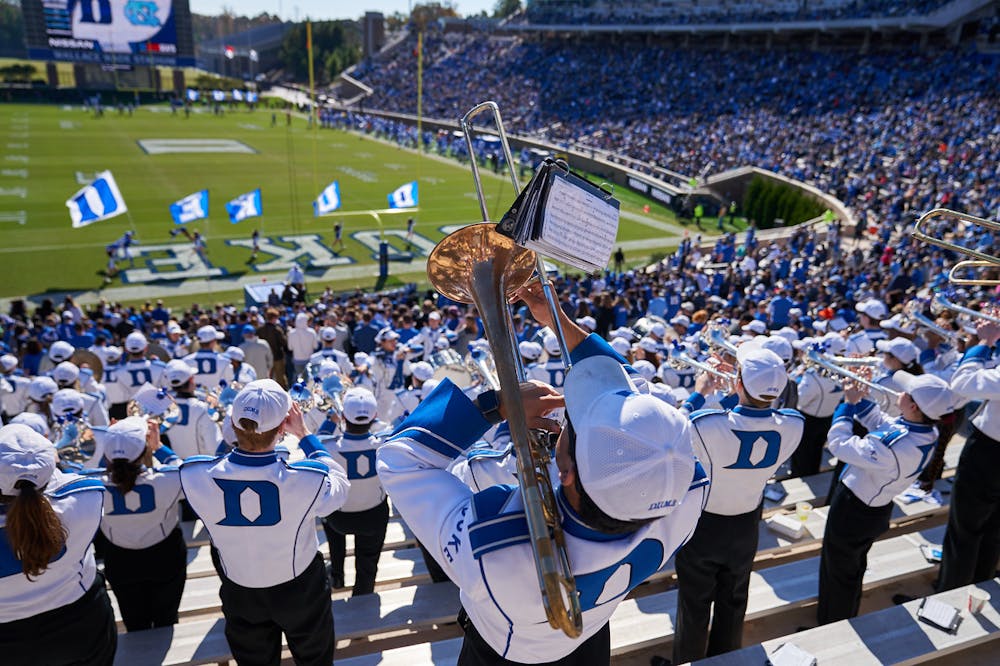
Compared to other university bands, the Duke Athletics Band is significantly smaller and practices fewer times per week. Washart says that while most college marching bands practice two to three times a day, the band comes together about two to three times a week. However, this doesn’t stop the band from building a community around a shared love for music.
The start of the journey
Students who join the band have a wide range of experiences in marching, from being significantly involved in their high school marching band to having no prior experience. Some people may even decide to learn how to play a new instrument, said sophomore Noella Barron, an alto saxophonist.
Starting in the 2023-24 academic year, all prospective band members are recommended to participate in Project Band, a new experiential orientation program that acts as a combination of a full orientation experience and a traditional band camp. The program provides incoming first-year students with marching band training and the opportunity to learn new music and drills, as well as community-building activities such as going to Falls Lake, seeing performances and participating in competitions between sections.
Before the establishment of Project Band, interested first-years participated in a separate band camp in addition to their orientation program, which Barron felt was more stressful than the current system.
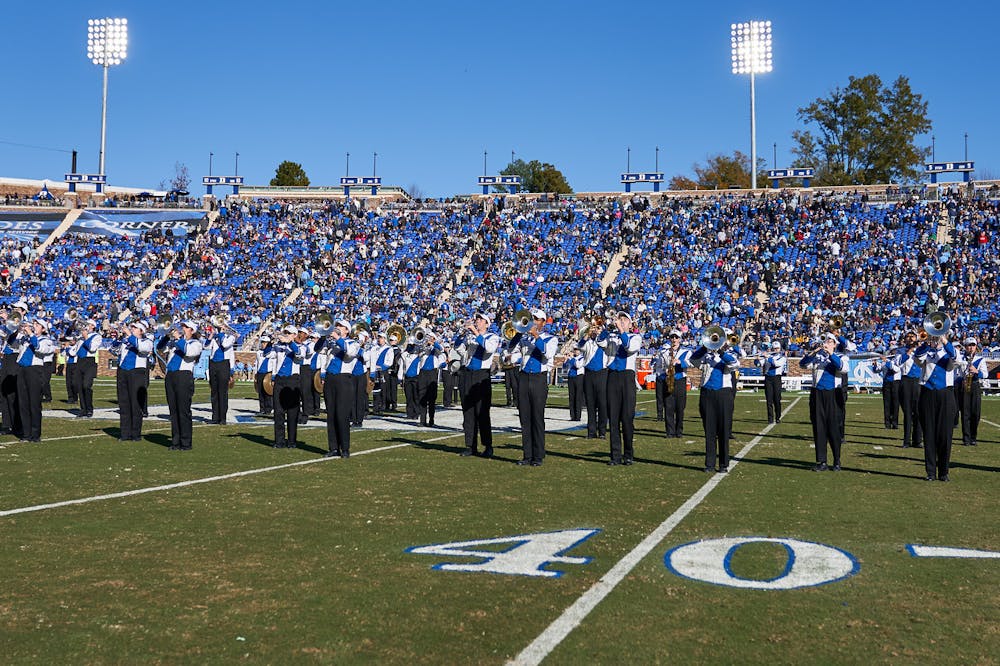
New student recruitment is challenging due to the short window between students’ commitment to Duke and their selection of an experiential orientation program, Au says. The band’s recruitment process involves sending multiple emails to prospective students who participated in their high school bands, a strategy Au says helps convince those on the fence to join.
First-year sousaphonist Ricardo Urena, who joined the band with no prior marching band experience, described his experience in Project Band as consisting of hard yet rewarding work.
“When we played at the Clemson game … it was really incredible after having put in all the work [to see] the result,” Urena said. “… When you’re really happy with the product you’ve given at the end of the performance, it’s one of the best feelings ever.”
Building community
Like many organizations at Duke, the band saw a decline in membership during the COVID-19 pandemic, nearly resulting in a decision to cancel the band, Au said. The band persisted through the pandemic by continuing to come together to learn and play music with bell covers, following social distancing policies while practicing for concerts.
“It was objectively a terrible band experience if you judge it by the actual things that we got done,” Au said. “But subjectively, it was really good. We played a couple of concerts on the main quad and played four or five songs.”
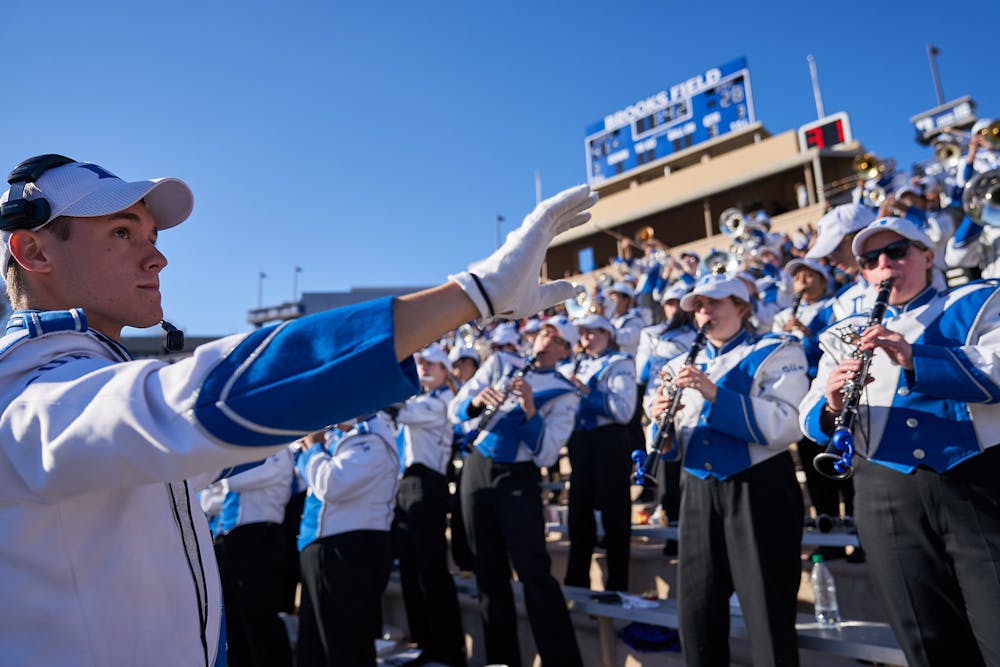
Despite the difficulties of adjusting to the pandemic, members were able to find their community in the band.
Washart, who joined the band as a first-year in fall 2020, shared that she was worried about making friends when she first arrived at Duke, but the band provided her with a strong community from the start.
“I wasn’t really feeling comfortable hanging out in large group settings or going out into downtown Durham like some other people were,” she said. “So I was looking for an alternative way to stay safe, make some friends and at least get to meet a lot of people. Band just offered the perfect place for that.”
Shared traditions also help band members bond.
For the Pep Band, members wear a blue-and-white striped rugby uniform. As a tradition for the annual Duke-University of North Carolina at Chapel Hill home game, band members paint the rugby design on their bodies. Junior Ben Platz, mellophone section leader, described meeting with other members hours before the game starts to partner up and paint the lines on each other.
Section wars are another one of the band's main traditions, which fosters community through friendly competition between the different sections. Events include running the FitnessGram PACER test, playing in Mario Kart tournaments and holding lettuce eating competitions.
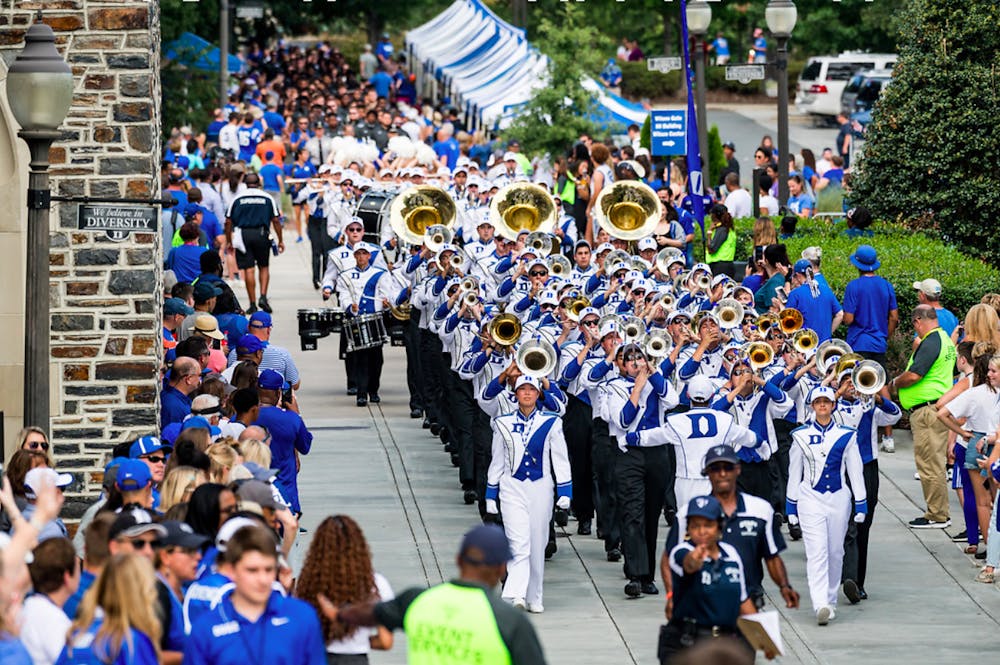
Beyond section wars, involvement in the band has provided a network of support and guidance for many members.
Junior Katherine McKenzie is one of the band’s two drum majors, responsible for leading and conducting the band as well as helping to set up and break down after shows.
She noted that surrounding herself with a diverse group of students from different backgrounds and majors has made both the band and her time at Duke more fun.
“There are some people in [the band] that have become some of my best friends. I probably wouldn’t really have interacted with them if it wasn’t for the band, so I’m truly grateful for that,” Barron said. “It really does foster friendships that go far beyond the bounds of the music and the games that we’re going to.”
‘Bring the hype’
While most students see the band for a few hours at sporting events, they rarely see the time band members spend behind the scenes.
The time commitment to be in the band varies significantly throughout the year, with its most hectic period being late October and early November, when football and basketball seasons begin overlapping.
In preparation for football games, the band holds two to three rehearsals per week, and members come together to cheer on the football players at the Blue Devil walk. For home basketball games, students attend one rehearsal in the spring.
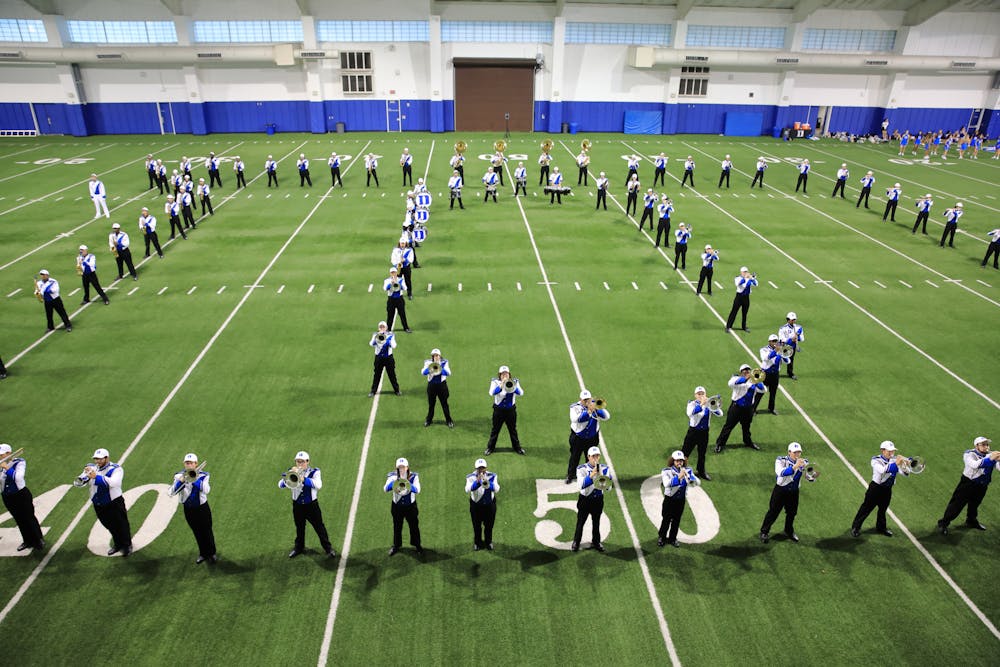
All band members are required to attend every football game, but they are assigned to half of the men’s and women’s basketball games. They may choose to attend more basketball games, with the exception of the Duke-UNC game in Cameron Indoor Stadium.
Priority spots for the Duke-UNC home game are based on the number of points each band member earns by playing at games. According to Washart, around 70% of the band plays at the Duke v. UNC at home.
Platz described balancing other time commitments with the band as being tough at some points, but “overall worth it.”
“I definitely think it’s the coolest thing I do at Duke,” McKenzie said. “… You’re very intensely involved in the game, and you also know it’s your job to bring the hype and bring the spirit, so it’s definitely action-packed.”
Get The Chronicle straight to your inbox
Signup for our weekly newsletter. Cancel at any time.
Amy Guan is a Pratt senior and a senior editor of The Chronicle's 119th volume.

